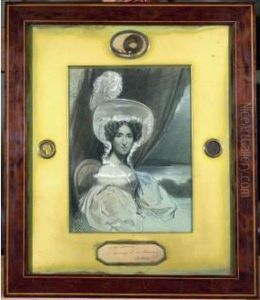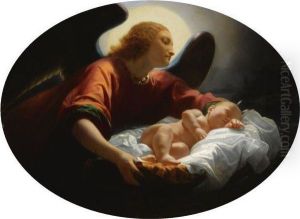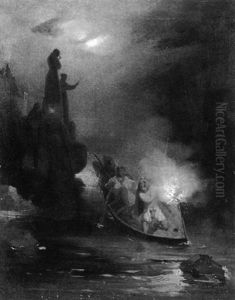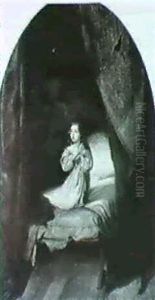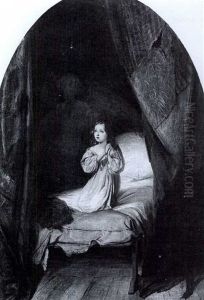Felix Cottrau Paintings
Felix Cottrau, also known as Fortunato Felice Cottrau, was an artist who was born in 1799 in Paris, France. He was part of a family of French engravers and lithographers, which included his father, Pierre Cottrau, who was a prominent engraver. Felix Cottrau's family moved to Naples, Italy, where they established themselves and contributed to the local art scene.
Cottrau's work was primarily in the realm of lithography, a form of printmaking that was relatively new at the time and involved drawing images on a stone plate with a grease-based medium and then printing it onto paper. This technique allowed for high-quality reproductions of works of art, which could be distributed more widely than singular paintings or drawings.
Felix Cottrau is often remembered for his depictions of Neapolitan life, landscapes, and customs. His works reflected a keen interest in the everyday activities of the people of Naples and often included lively street scenes and picturesque views of the surrounding countryside. These prints contributed to the popular genre of vedute, or scenic views, that were particularly sought after by tourists and collectors during the 19th century, as they captured the romantic allure of Italy's historical sites and vibrant urban life.
Cottrau's contributions to the arts were not limited to his own creations. He was also involved in the local artistic community in Naples, fostering the exchange of ideas and practices among artists, which helped in the dissemination of lithographic techniques throughout the region. His family's workshop became a hub for artists to learn and perfect the art of lithography.
Felix Cottrau passed away in 1852. Although he may not be as widely recognized as some of his contemporaries, his work remains an important part of the history of lithography and provides valuable insight into the cultural and social fabric of 19th-century Naples.
